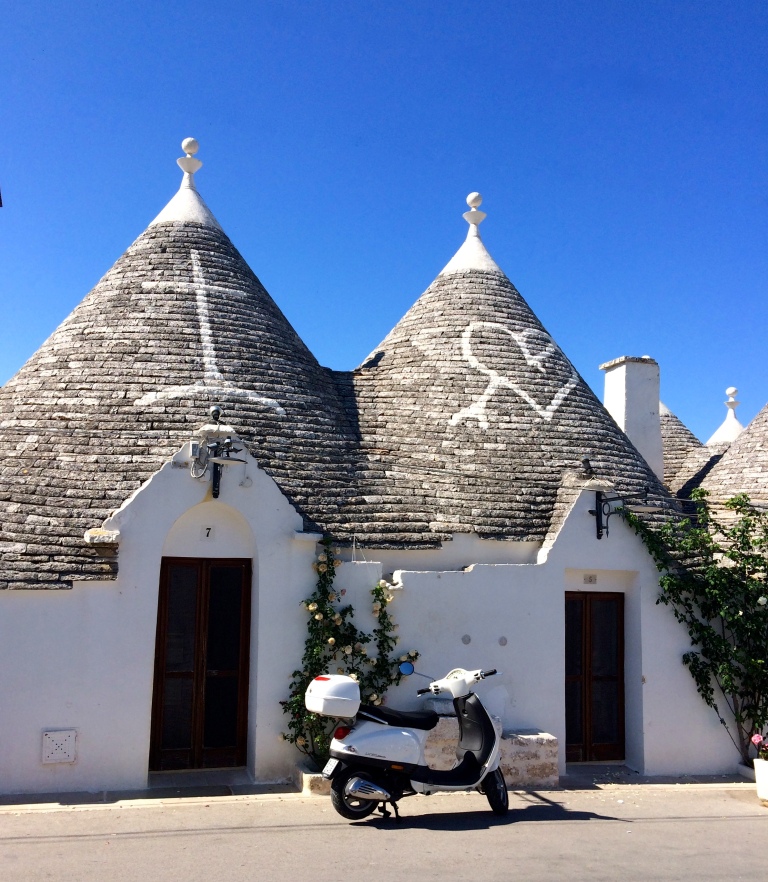
Arriving in the small whitewashed village of Alberobello felt like stepping into the Shire from “The Hobbit.” While I didn’t see little hobbits with hairy feet, the village streets were bustling with visitors like myself, exploring the rows of cone-roofed trulli that now house everything from gift shops to restaurants. Quirky and charming? Absolutely!
Located amidst ancient vineyards, medieval castles, and pristine beaches, Alberobello rests at the tip of Italy’s heel. Its proximity to the Adriatic coast makes it an increasingly popular tourist destination.
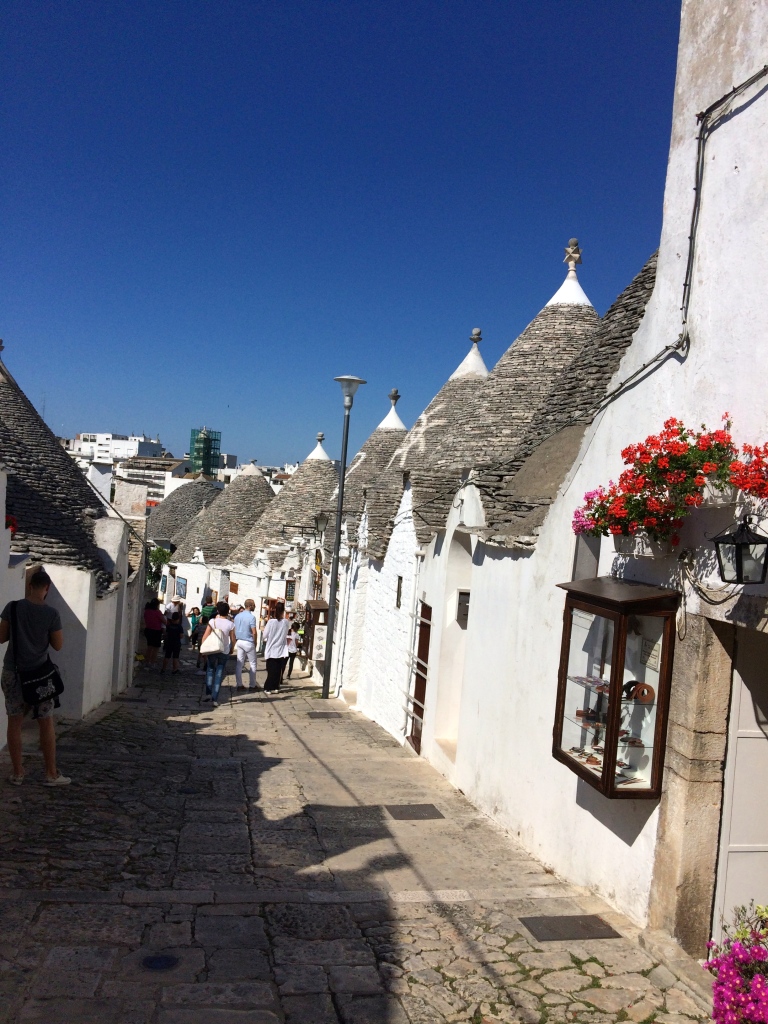
What exactly are these unique cone-shaped cottages? Known as Trulli, these limestone homes are constructed without mortar using ancient building techniques. Their pyramidal, domed, or conical roofs are made of corbelled limestone slabs that overlap. Particularly found in the Itria Valley of Puglia, Trulli have been around since the mid-14th century and can be traced from Celtic Ireland to Sardinia and across to Puglia.
So why this unconventional method of construction? One significant reason was the need for homes that could be easily taken down before tax inspectors arrived to impose fees on permanent properties—hence, the mortarless design. They served as both residences and functional spaces for the agricultural community.
The Trulli experienced a renaissance in the 19th century due to the booming wine industry. Nowadays, many Trulli serve as charming Bed & Breakfasts or shops.
Let’s take a look inside one of these fascinating structures…
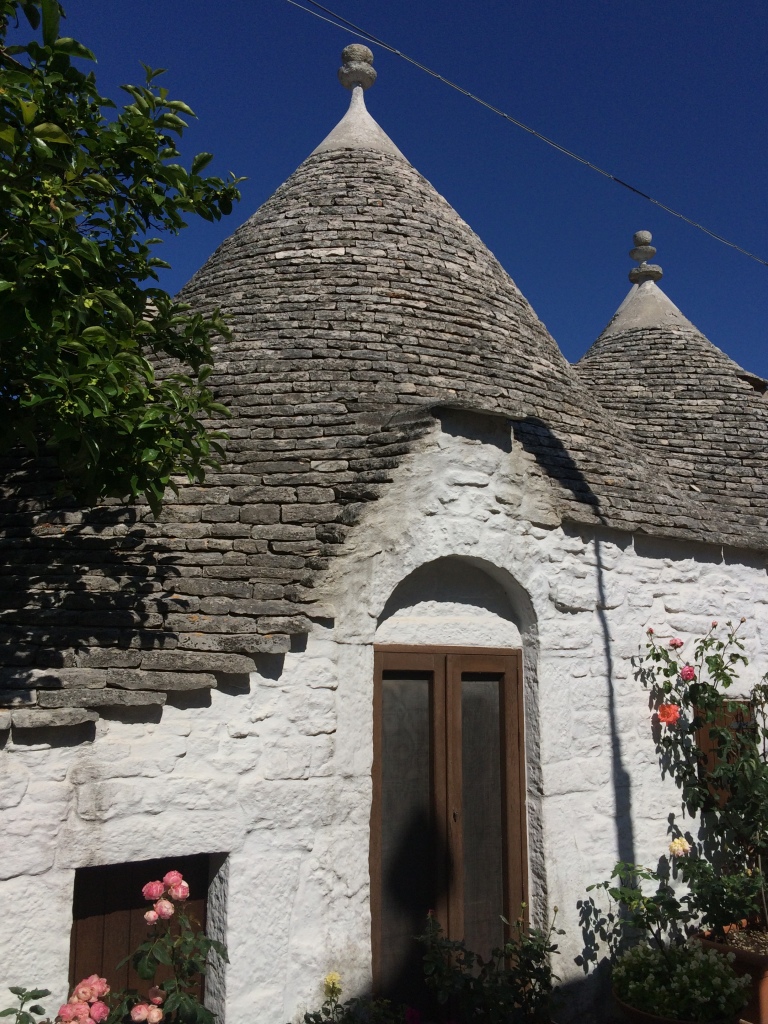
Traditional Trulli typically feature a single room beneath the conical roof, with additional living areas in arched niches dressed with curtains. Many of the Trulli repurposed as Bed & Breakfasts have been remodeled for comfort, often boasting an open fireplace with a chimney. However, these designs can be challenging to heat due to the conical roofs. The thick walls also make them quite cold during the winter months. The tall ceilings and minimal windows can give the space a cave-like atmosphere.
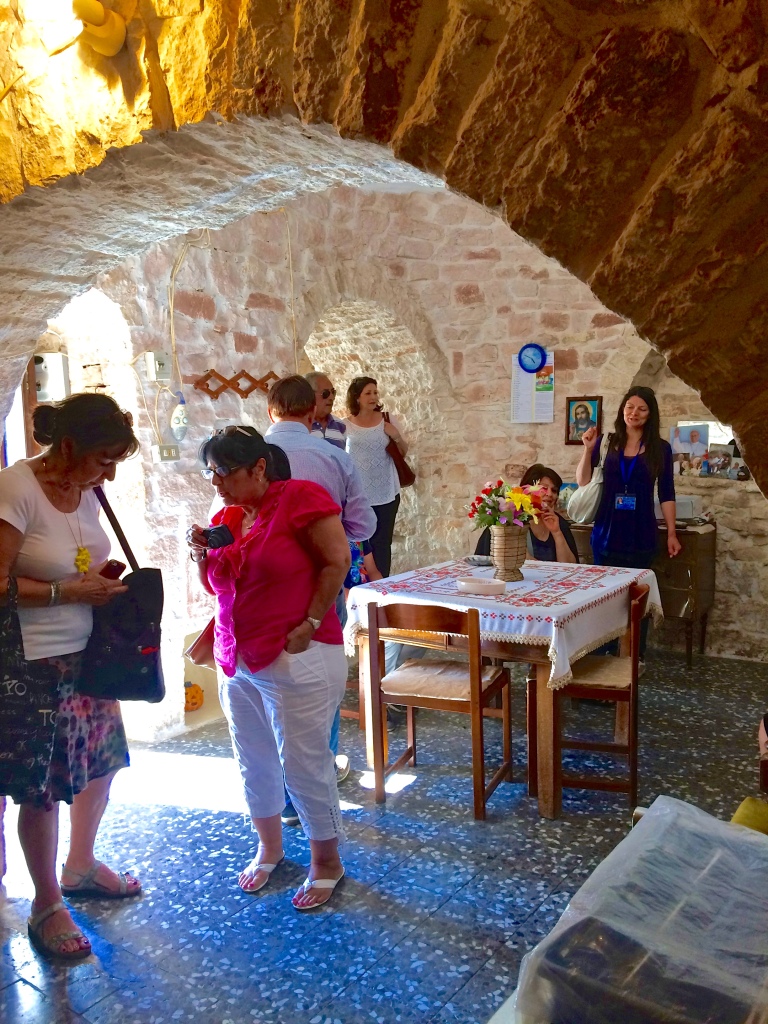
As I strolled through this Trullo, which only took a few minutes, I was captivated by its charm. The light-colored brickwork brightened up a space that could have felt quite cave-like. Though small, I could definitely imagine a cozy stay here. Everything I needed was conveniently close, and stepping outside welcomed me to bright sunshine reminiscent of Dorothy’s experience in Oz.
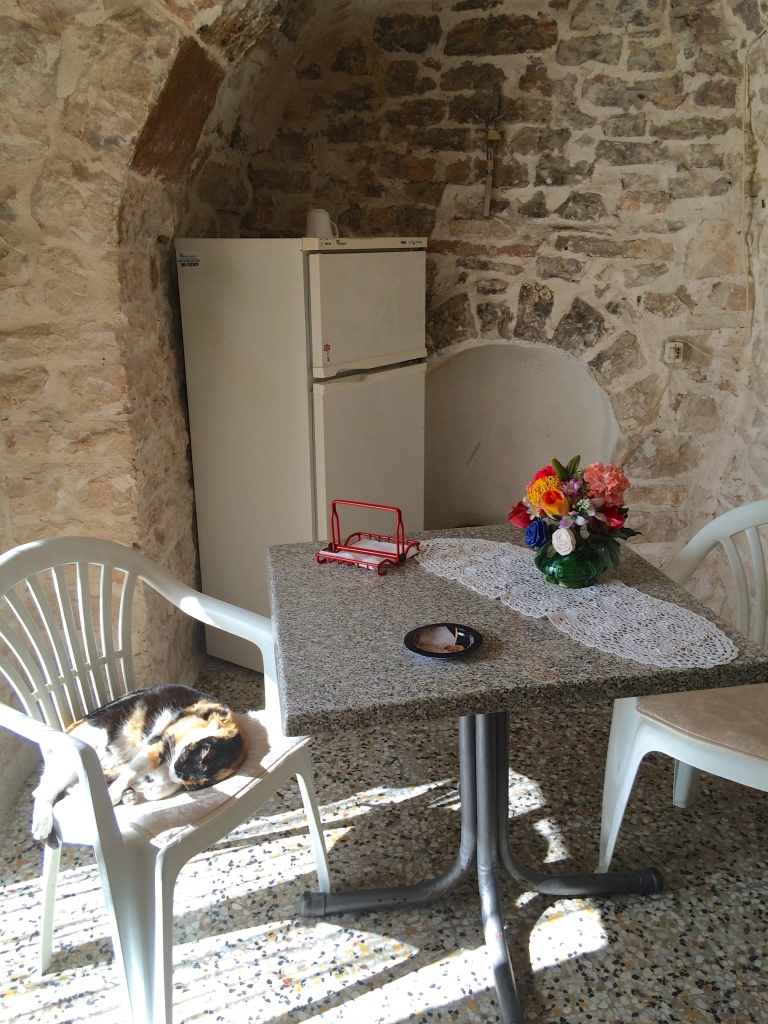
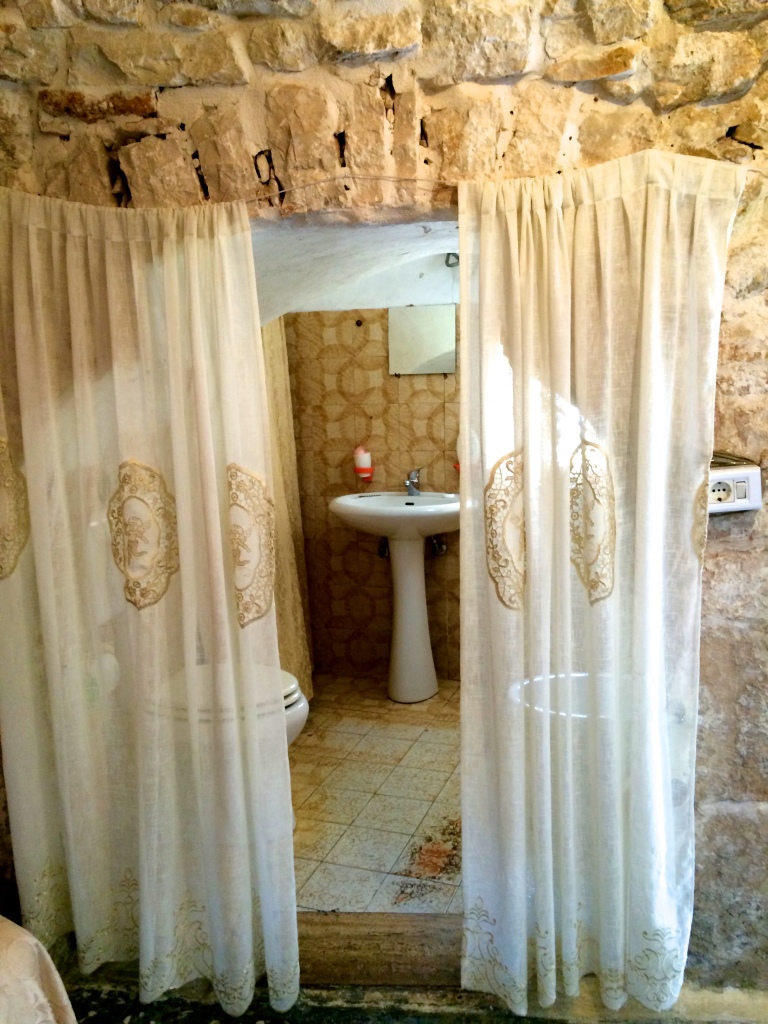
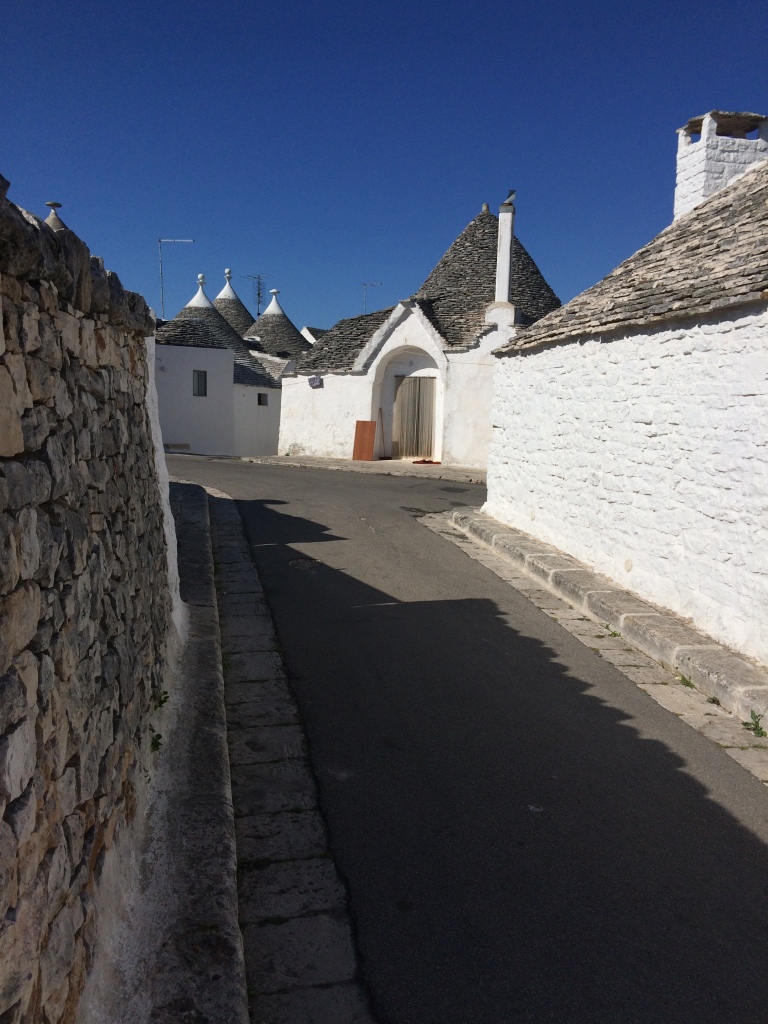
A bed partially tucked into an alcove.
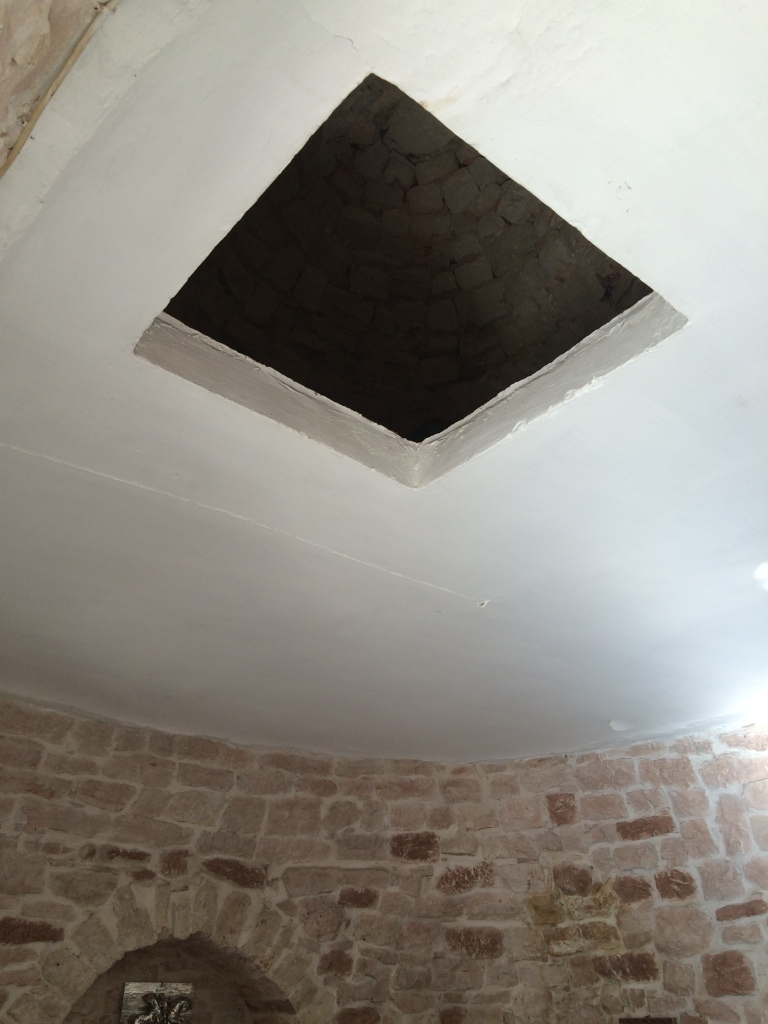

The neatly arranged streets of Trulli in Alberobello invite visitors to stroll, shop, savor the authentic cuisine of Puglia, and connect with the locals.
Have you ever visited a Trullo? If so, feel free to share your thoughts in the comments below. Let’s go!
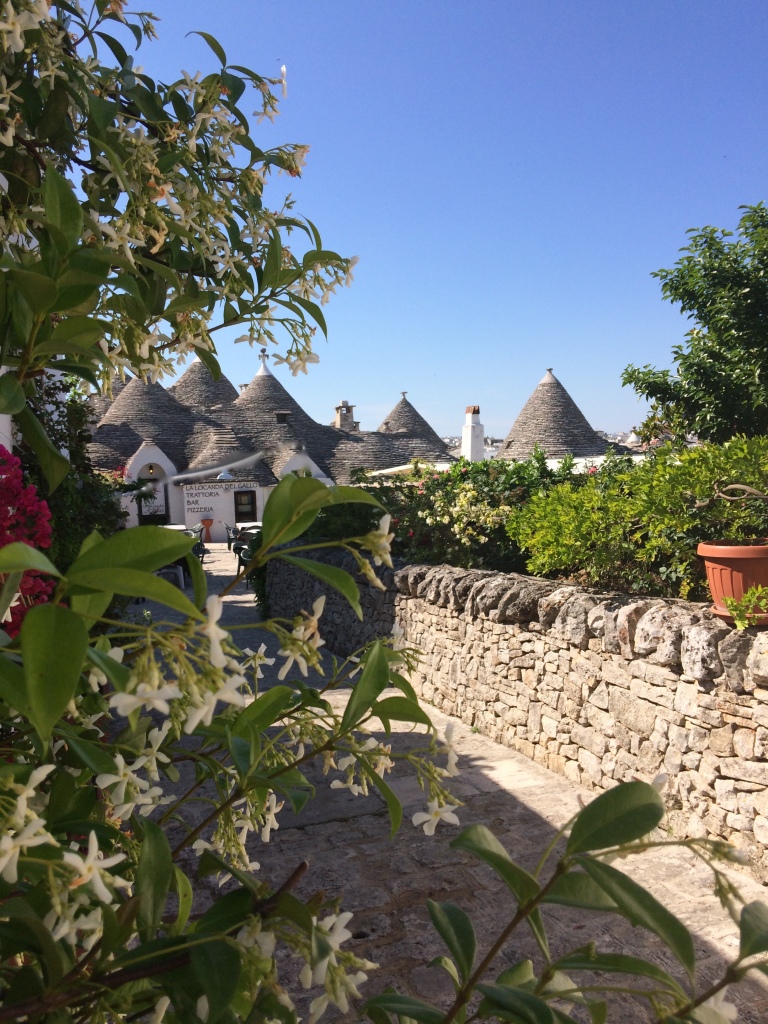
If you’re interested in experiencing a Trullo stay, I recommend checking out Trulli é Puglia. Although I haven’t personally stayed there, as I was on a group tour, it seems to offer an authentic local experience.
Sources of information used:
‘Puglia, Land of Wine’ from winesofpuglia.com
‘Characteristics and Distribution of Trulli Constructions in the Area of the Site of Community Importance Murgia of Trulli’ from agroengineering.org



